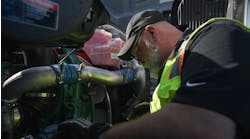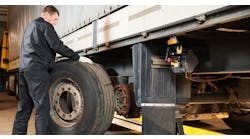Trucking was on the forefront of IoT before it was called IoT. The value of tracking assets, optimizing routes and managing driver behavior has been going on for years. Unfortunately, it was an expensive, hardware-centric approach. Even though there was some thought about diagnostic trouble codes (DTCs), they typically ended up as spam or a major annoyance.
As with all IoT initiatives today, the biggest challenge is making information actionable and valuable. It's not enough to just know that something is happening. So that brings us full circle to how service relationship management is truly the first IoT technology for heavy duty equipment to connect assets, people, process and content in a real-time fashion across not only the fleet, but the entire service supply chain. Imagine:
- A fault code is captured.
- In near real time, that fault code is analyzed and a severity, probable cause and likely solution (VMRS [Vehicle Maintenance Reporting Standards] coded operation with parts) is developed.
- The fleet, OE field service team and breakdown center (fleet, OE or third party) are all notified of the event and have visibility to all the information, plus the location of the truck.
- Based on the truck’s location, the best available dealers or service locations are identified. An appointment is set and accepted.
- Even before the truck arrives, the shop has access to all the DTCs, engine data, fluid, battery levels and more, cutting diagnostic time by more than 70 percent.
- The arrival of the truck triggers a geofence, so all participants know it has arrived.
- Using a mobile tablet to check-in the asset by scanning the QR code and performing an inspection eliminates “fat fingering” the VIN and manual data entry of a paper-based form.
- As the truck goes through the repair process, real-time updates and target completion time are shared with all participants, including dispatch/operations at the fleet and alerts/notifications are sent whenever unexpected delays occur.
- The repair is done (25-50 percent faster), and everyone is notified.
The bottom line: IoT information is used to automate a process and software is used to ensure real-time updates based on actionable information, driving uptime, improving efficiency and reducing costs for all service supply chain participants.
Information provided by Decisiv


